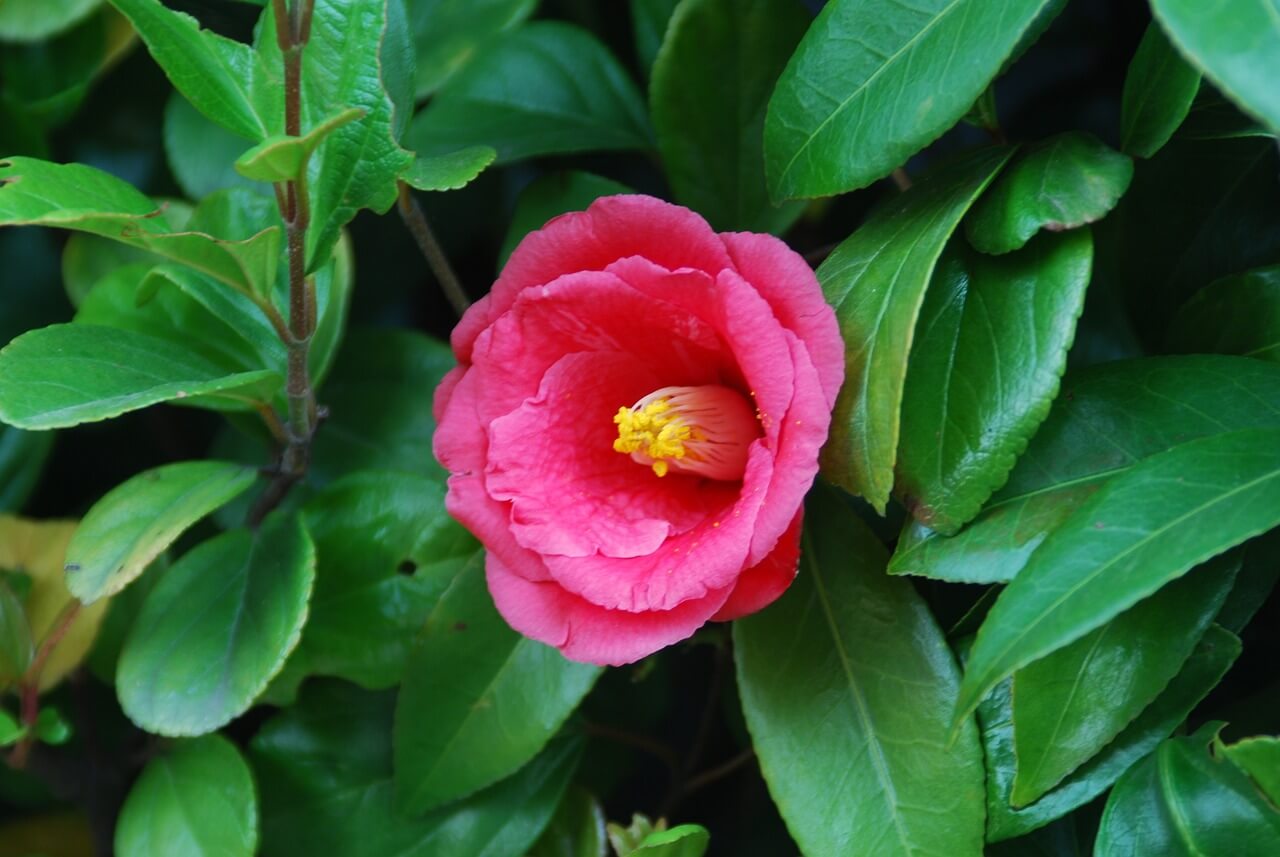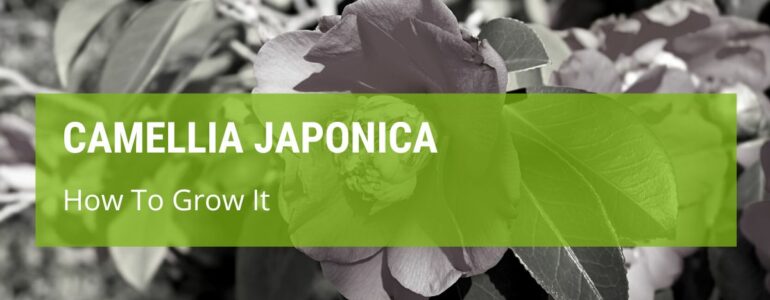If you’ve never grown camellia before and you want to find out how to grow camellia japonica, you are in for a real treat!
This plant is a great addition to your garden, with its glossy foliage and beautiful flowers. As long as you stick to its favourite growing conditions, you can enjoy this lovely plant for years to come.
How To Grow Camellia Japonica

These beautiful plants should grow quite happily in your garden, but you will need to bear a few things in mind to keep them at their happiest:
- They grow best in the shade, so planting them in shadier areas of your garden is ideal for both the plant and for you.
- Acidic soil is needed – camellia like to grow in a pH of around 6-6.5. If you do not have acid soil then you may have to consider growing them in pots.
- The soil must be well draining, or the plants’ roots will rot. The soil must be kept moist, however, but the water must be allowed to drain away.
- Camellia need a sheltered spot – high winds and too much exposure will cause extensive damage to the flowers.
- They like to have sun in the morning, then a dappled light for the rest of the day, so watch where you plant them in your garden.
- They should be planted in the Autumn, so that the roots have time to really get established before the spring growing season.
- Any dead or spent flowers should be removed from the plant – deadheading will not necessarily encourage new flowers, but it will definitely make the plant look nicer.
- Camellia will need to be well watered during the summer, to help them form next year’s flower buds.
- Rain water is the best water to use – these plants don’t like hard water, particularly if there is a high amount of calcium deposits.
- Mulch around the plant with organic material in the spring, to give a boost of nutrients just when the plant needs it.
- You will need to cover or mulch your plant in the winter, as frost and snow can damage them. Otherwise, they are actually quite hardy!
- Camellia are pretty easy to propagate from cuttings – waiting for seeds can take years and is not as good a method.
- Give them a prune every few years in the late spring, by thinning out the twiggy branches and allowing sunlight to reach the centre.
This detailed article will tell you just about everything you need to know.
Is Camellia Japonica Easy To Grow?
These plants do have a little bit of a reputation, possibly because their flowers look so delicate and beautiful.
However, despite this, they are fantastically easy to grow! As long as you give them the right conditions, they will reward you.
- Watering is a big issue for camellia – they like to be kept moist, but they won’t tolerate sitting in a swamp.
- Wind can cause this plant problems – in very exposed areas the flowers can get damaged and drop if it is too windy.
- Cold will affect them, it’s true – but they are hardier than you think, and will survive a winter as long as they are protected from the worst of the cold and frosts.
- Shade is actually their favourite condition. This makes them a great addition to a garden where you aren’t able to grow sun-loving plants.
- Pests are not much of a problem for this plant – they are mostly resistant, apart from things like Camellia gall, petal blight and nutritional deficiencies.
People used to think that this plant was not at all hardy and couldn’t survive the winter – but as long as they don’t get too cold, they will act like any other perennial.
Are Camellias Best In Pots Or Ground?
Although some plants hate pots, and others won’t thrive in the soil, camellia is one of those easy ones that you can grow just about anywhere!
Planted out in the garden is great for them – as long as you have the type of acidic soil that they like the most.
You can determine what sort of soil you have by doing a soil test; this is quick and easy, and will tell you exactly what type of plants you can grow.
If your soil is not acidic, growing camellias in pots is a better idea, as they simply won’t thrive in the wrong soil.
These plants are happy in pots (like this one), and it’s a great way to bring a little moveable colour and texture to your garden.
You can, of course, change the pH of the soil in your garden by adding things like limestone, or wood ash, and many people have had success – but it’s tricky if you’re trying to do a large area.
- If you are planting in the soil then ensure it is acidic and well-draining, and that your camellia is in at least partial shade.
- For camellia in pots, make sure you pick the right sized pot, and that you use peat-free compost.
- For either growing space, remember that rainwater is the best option, as these plants can’t handle hard water with lots of calcium deposits.
Is Tomato Feed Good For Camellias?
Tomato feed seems to be recommended for so many things other than tomatoes, doesn’t it? This is because it is a really great plant food!
This particular type of fertiliser is designed to encourage flowers and fruits, so it is the ideal thing to feed to your camellias.
Tomato feed also encourages the entire plant to be healthy, not just the flowers, so it is great for all plants, flowering or not.
These pretty plants also like a fertiliser that is high in potash, so you can give this alongside your tomato feed – just remember to flush the soil through fairly often.
Here’s a good video about feeding some interesting things to camellias:
Final Words
This wonderful plant, despite its few little quirks and foibles, is a truly lovely plant that should grace your borders for a good long time.
Now you know a little more about it, hopefully you can get on with growing the most beautiful blooms that will be the envy of all your neighbours!



